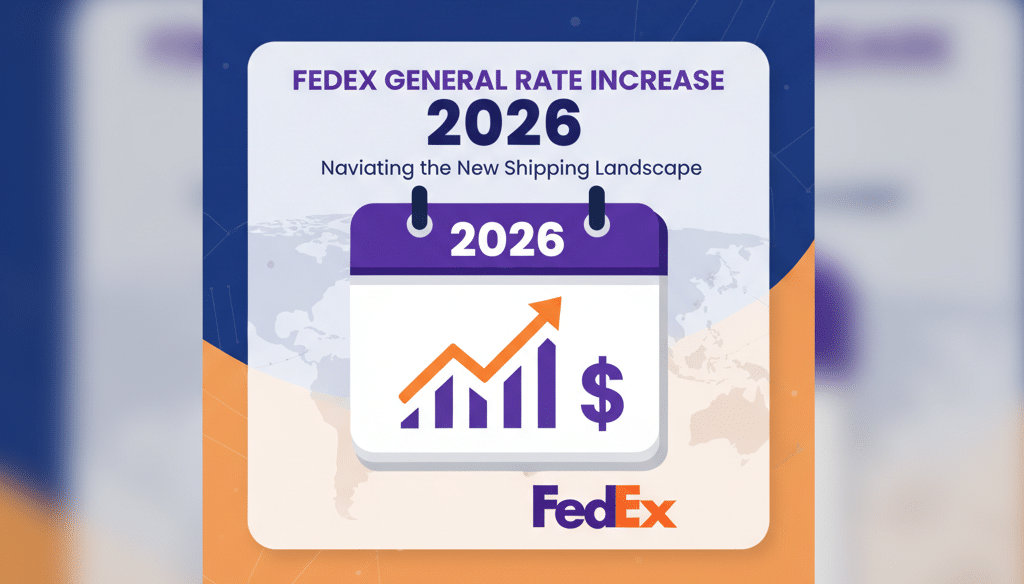What Is a Freight Claim?
A freight claim is a formal request for compensation when your shipment is lost, damaged, or delayed while in transit. It’s part of the freight claims process, which is how you recover the value of goods when something goes wrong during shipping.
Freight claims protect your bottom line, but the process can be complicated by carrier rules, deadlines, and liability limits that affect how much compensation you’ll receive—if any.
In this article, we’ll walk you through the freight claims process and show you how to reduce claim risks altogether with the right tools, practices, and partner.
Key Takeaways
-
Freight claims protect your business when shipments are lost, damaged, or delayed.
-
Successful claims depend on documentation, including inspection notes, photos, and timely filing with the correct carrier or insurer.
-
Preventing claims is just as important—proper packaging, reliable carriers, and support from a 3PL can reduce risk and speed up resolution.
When Should You File a Freight Claim?
You can file a freight claim when your shipment arrives damaged, goes missing, or is delayed beyond what’s considered reasonable. These delivery failures break the terms of the shipping contract and entitle you to file a claim to recover your losses.
There are four main types of freight claims:
-
Damage Claim – Cargo arrives physically damaged
-
Loss Claim – Entire shipment is missing
-
Shortage Claim – Fewer items delivered than expected
-
Delay Claim – Shipment is late and causes financial loss
These issues can stem from mishandling during loading, inadequate packaging, theft, accidents, or other in-transit disruptions.
However, not every delivery issue qualifies for a freight claim. Claims may be denied if the freight damage is due to poor packaging or exempt events like natural disasters or government actions under the Carmack Amendment.
To improve your chances of a successful claim, you need to follow the right process from the start—and we’ll show you how.
How to Successfully Navigate the Freight Claims Process

The freight claims process can be complex, and misunderstandings often lead to delays or denials. Carriers have strict rules on eligibility, documentation, and deadlines, so knowing what to expect and understanding freight claims improves your chances of recovering losses.
Here’s what you need to know to file a freight claim successfully.
Inspect the Shipment Upon Delivery
If you want to “win” your freight claims, always conduct a thorough inspection when your shipment arrives. Look for dents, tears, or crushed boxes and ensure the entire shipment is as expected.
If there’s any visible damage, missing items, or other discrepancies, identify and report it immediately—preferably while the driver is still on-site.
Document Damage Effectively
Proper documentation is the backbone of a successful freight claim. Carriers require clear, detailed evidence, and missing or incomplete records can lead to delays or denials, so:
-
Take clear photos of the damaged freight, packaging, and any visible impact points from multiple angles.
-
Save all shipping documents, including the freight bill, signed delivery receipt, bill of lading, and packing slip.
-
Note any issues on the Proof of Delivery (POD) before signing.
-
Obtain witness statements from warehouse staff or drivers if possible.
Strong documentation makes it harder for the carrier to dispute your claim and increases your chances of a faster resolution. The more proof you provide, the better your odds of receiving full compensation.
Hold Onto Damaged Product
Never discard damaged freight until your freight claim is fully resolved. Carriers often request an inspection before approving a claim, and disposing of the product too soon can void your claim.
You should store all damaged goods and packaging somewhere safe and in the same condition you found it. That way, you can ensure your proof matches your claim if the carrier requests an inspection.
File a Freight Claim
Once your documentation is ready, it’s time to file the freight claim. Most carriers require you to file claims within 90 to 120 days, but some have much shorter windows. Filing late or omitting key documents can result in automatic denial.
To strengthen your claim, make sure to include:
-
A completed claim form with shipment and incident details
-
The freight bill and signed delivery receipt
-
The bill of lading and original invoice (if available)
-
Photos of the damaged cargo and any related packaging
-
Inspection reports or written statements, if applicable
Follow the carrier’s preferred submission method, whether that’s online, email, or physical mail. Double-check that all files are complete and legible, and confirm the claim was received. The more complete your submission, the faster it’s likely to be processed.
Monitor the Claim Status and Follow Up As Needed
Filing your freight claim isn’t the finish line. Once submitted, it’s your responsibility to monitor its progress and keep the process moving. Carriers are required to acknowledge claims within 30 days and issue a resolution within 120—but they don’t always stay on schedule.
Stay proactive by:
-
Following up regularly to check the status
-
Responding quickly to any requests for more documentation
-
Keeping records of all communication with the carrier
If the process stalls or communication breaks down, stay persistent. Regular follow-ups reduce delays and show you’re actively engaged in the resolution process—and that you’re not going to forget about your claim.
Appeal Your Claim or Negotiate Compensation
Not all freight claims are approved on the first try—and even when they are, you might not get what you need. That’s when it’s time to escalate or negotiate.
Start by reviewing the carrier’s decision closely. If compensation seems too low or the claim was denied unfairly, you have options:
-
Contact the carrier to clarify how they reached their decision
-
Present additional documentation or evidence to support your case
-
Submit a formal appeal, following the carrier’s dispute process
Appeals and negotiations can take time, but with the right strategy and support, they often lead to better results.
How to Minimize Freight Claims
The best way to manage freight claims is to prevent them from happening in the first place. While no shipping process is completely risk-free, proactive steps can significantly reduce the likelihood and inconvenience of damaged cargo, lost shipments, or delays.
Here’s how you can reduce shipping claims:
-
Optimize Your Packaging: Inadequate packaging commonly leads to denials, so use durable materials, secure pallets properly, and follow carrier guidelines to prevent in-transit damage.
-
Choose Reliable Carriers: Partnering with carriers who experience fewer problems minimizes disruptions and improves accountability.
-
Invest in Freight Insurance: Standard carrier liability limits may not cover the full value of a lost or damaged shipment. Additional freight insurance ensures your insurance claim covers your full expenses when issues arise.
Even with the best preventive measures, freight claims can still occur. When they do, an efficient claims process ensures a faster and more successful resolution.
The Benefits of Third-Party Providers In the Freight Claims Process
Freight claims can be time-consuming, frustrating, and difficult to manage on your own. Small mistakes, missing documentation, and late filings may lead to delays or denials that cost your business money. That’s why many shippers rely on third-party logistics (3PL) providers like Zero Down to take over the freight claims process.
At Zero Down, we combine expert service with advanced technology to streamline claims and maximize your chances of recovery. We handle every step—from filing to follow-up—so you don’t have to.
Our freight claims management solution offers:
-
Accurate, on-time filing to prevent rejections or missed deadlines
-
Automated tracking and alerts so no claim falls through the cracks
-
Complete documentation management, including BOLs, invoices, and damage reports
-
Ongoing follow-ups with carriers to move claims forward and avoid delays
-
Experienced claim negotiators who push for the highest possible refunds
With Zero Down managing your freight claims, you get faster resolutions, better outcomes, and more time to focus on your business—not chasing carriers.
Case Study: How Zero Down Helped Secure A Year of Claims in 30 Days
After not receiving any refunds for their delivery issues, a client came to Zero Down for help. With our advanced logistics platform, FreightOptics™, we identified over 200 eligible freight claims and recovered $12,000 in just 30 days—more than they had received in the entire previous year.
Freight Claims Don’t Have to Be Complicated
Freight claims are a common part of shipping—but they don’t have to drain your time or budget. With the right tools and support, you can prevent problems and resolve issues faster.
Whether you’re looking to prevent claims, resolve them faster, or recover more money, a smarter freight claims strategy starts with Zero Down.
Contact us to learn more.
Frequently Asked Questions
What can shippers file a freight claim for?
Shippers file freight claims when a shipment has a problem, like delays, damage, or loss, due to carrier negligence.
What are some common reasons for freight claims?
Common reasons for freight claims include damage to products, contamination, loss of freight, and truck accidents that impact your supply chain.
What should be done if cargo is received damaged?
If cargo is received damaged, it’s crucial to inspect it in the presence of the driver, document the damage on the bill of lading, take clear photographs, and contact the carrier immediately before signing the bill. If you discover damage later, file a concealed damage claim.
What is the typical timeframe for resolving a freight claim?
The typical timeframe for resolving a freight claim is between 30 to 120 days, depending on the level of proof provided and the carrier’s responsiveness. However, freight claims management can expedite the process.




